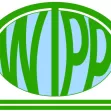Smart Growth

Smart Growth Plan Hopes to Rein in Sprawl in Walla Walla
The Washington city reformed its zoning code to support more multifamily development and a diversity of housing types to meet the needs of its growing population.

Initiative Brings Capacity Building to Booming Rural Towns
A research and capacity building initiative based at Utah State University seeks to help fast-growing tourist meccas in the West plan for smart growth.

Why Nevada Needs Sustainable, Smart Growth
Sprawling cities like Las Vegas must rein in unchecked growth and promote infill development and more sustainable transportation modes.

Urban Villages for the Proletariat
Compact, walkable urban villages benefit working families and organized labor by creating jobs, improving household affordability, reducing commute duration, improving economic opportunities, and creating cleaner, healthier communities.

What Is Smart Growth?
Smart growth describes an approach to planning and development that prioritizes compact built environments, designed for benefits to the economy and the environment.

Smart Growth Loves Heatmaps
Smart growth can provide many important benefits that are easy to see using informative and beautiful heatmaps—our complex world as viewed by all-knowing gods.

Getting to Work: New Commute Duration Heatmaps
The Mineta Transportation Institute's new interactive website produces heatmaps that illustrate commute duration—the number of minutes that workers spend traveling to their jobs—plus related information, for most U.S. communities.

Clean Vehicles Versus Vehicle Travel Reductions: Better Transportation Emission Reduction Planning
There are many possible ways to reduce transportation emissions, some of which provide large co-benefits. Unfortunately, current evaluation practices tend to overlook some of the best. Lets examine why.

To Save the Climate: Driving Habits Must Change
Even with ambitious electric Vehicle adoption, the United States must reduce vehicle miles traveled by 20 percent before the end of the decade to limit warming to 1.5°C, according to new research by the Rocky Mountain Institute.

What Is Sprawl?
Sprawl is one of the most common terms used to describe built environments in the United States and the world. It can be applied to urban, suburban, and exurban settings, and it's almost never a compliment.

The Housing Supply Debate: Evaluating the Evidence
Let's rely on science, not ideology and propaganda, when planning solutions to urban unaffordability. Look for credible evidence in the peer-reviewed publications referenced here.

The Housing Affordability Recipe
Smart policies can ensure that low- and moderate-income households can find suitable housing in good neighborhoods where transportation costs are low. The research is clear: upzoning works.

A Complete Community Is All Mixed Up
A complete community includes an optimal mix of people, activities, and transport modes in each neighborhood. Like a chef, planners need the right ingredients. Here is the recipe.

Defining the Buzzword: What's a 15-Minute City?
What does it mean to be a 15-minute city?

Hug a Tree. Protect a Forest.
Communities have good reasons to protect trees and forests. Planners can help make this happen.

Insights from the 2020 Community and Transportation Preference Survey
The National Association of Realtors' recent Community and Transportation Preference Survey shows that many households prefer living in walkable urban neighborhoods, and those that do have a higher quality of life.

A New App Helps Identify 15-Minute City
The new 15-Minute City App generates maps which show the number of services and activities within a 15 minute walk, and and therefore whether an area can be considered a 15-minute neighborhood.

Well Done, Kiwis! New Zealand Delivers Big Planning Policy Reforms
New Zealand’s new national urban development policy prohibits parking minimums and increases allowable building heights near transit stations. This is a watershed moment for the country’s cities and towns.

New Rule on Environmental Impacts of Driving, Long Awaited, Goes Into Effect Today
At long last, California law will consider the amount of driving, rather than vehicle delay, when evaluating the environmental impacts of new developments. This is a more common-sense approximation of their environmental impacts.

The Right to the City: Planners’ Role in Creating Affordable and Inclusive Communities
In a modern, post-industrial society, economic opportunity depends on disadvantaged households’ ability to find suitable housing in an economically successful city. Planners can make that happen.
Pagination
Placer County
City of Morganton
HUD's Office of Policy Development and Research
Dongguan Binhaiwan Bay Area Management Committee
City of Waukesha, WI
Los Angeles County Metropolitan Transportation Authority
Indiana Borough
Urban Design for Planners 1: Software Tools
This six-course series explores essential urban design concepts using open source software and equips planners with the tools they need to participate fully in the urban design process.
Planning for Universal Design
Learn the tools for implementing Universal Design in planning regulations.










